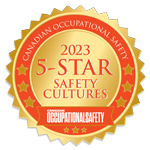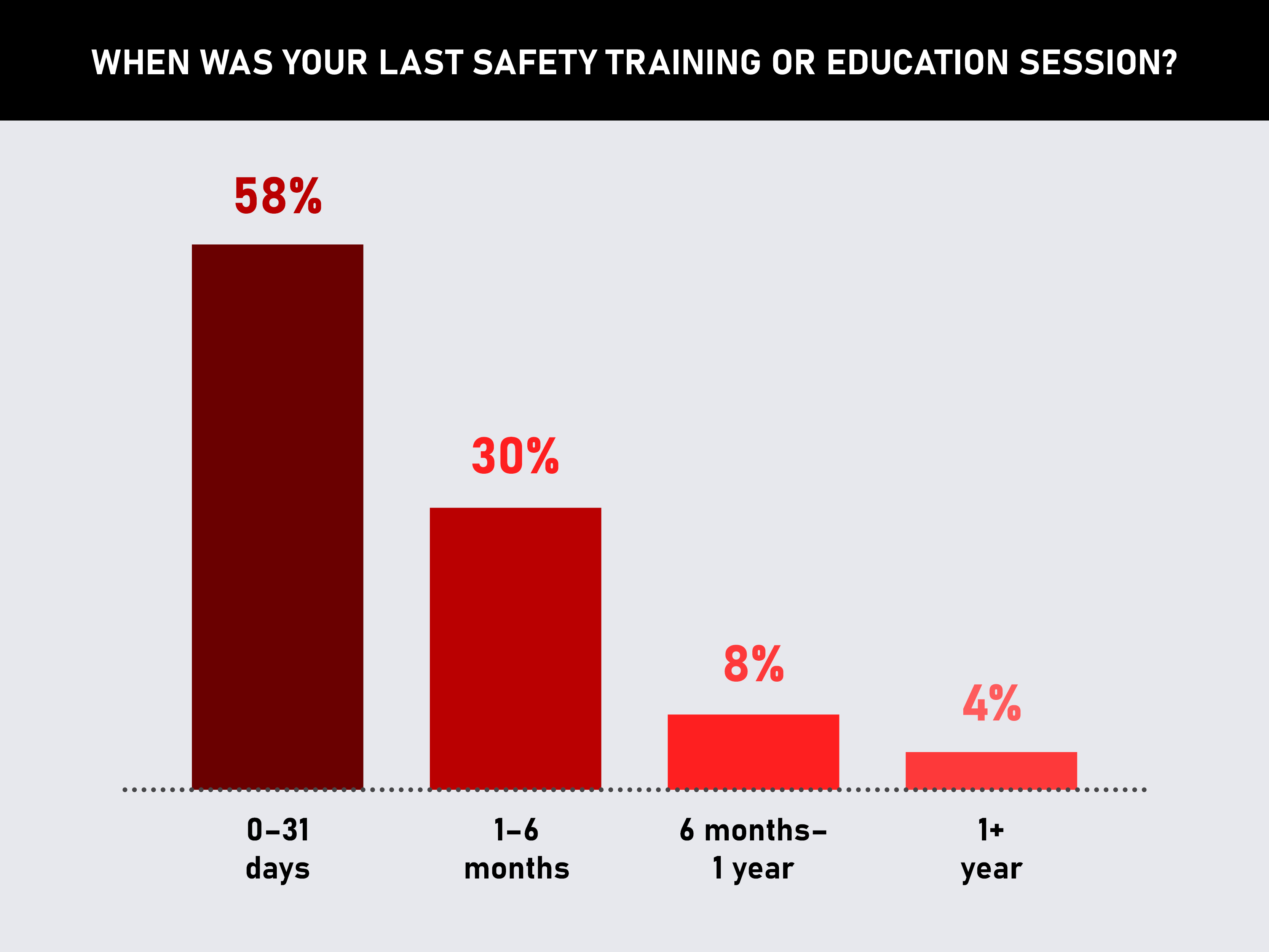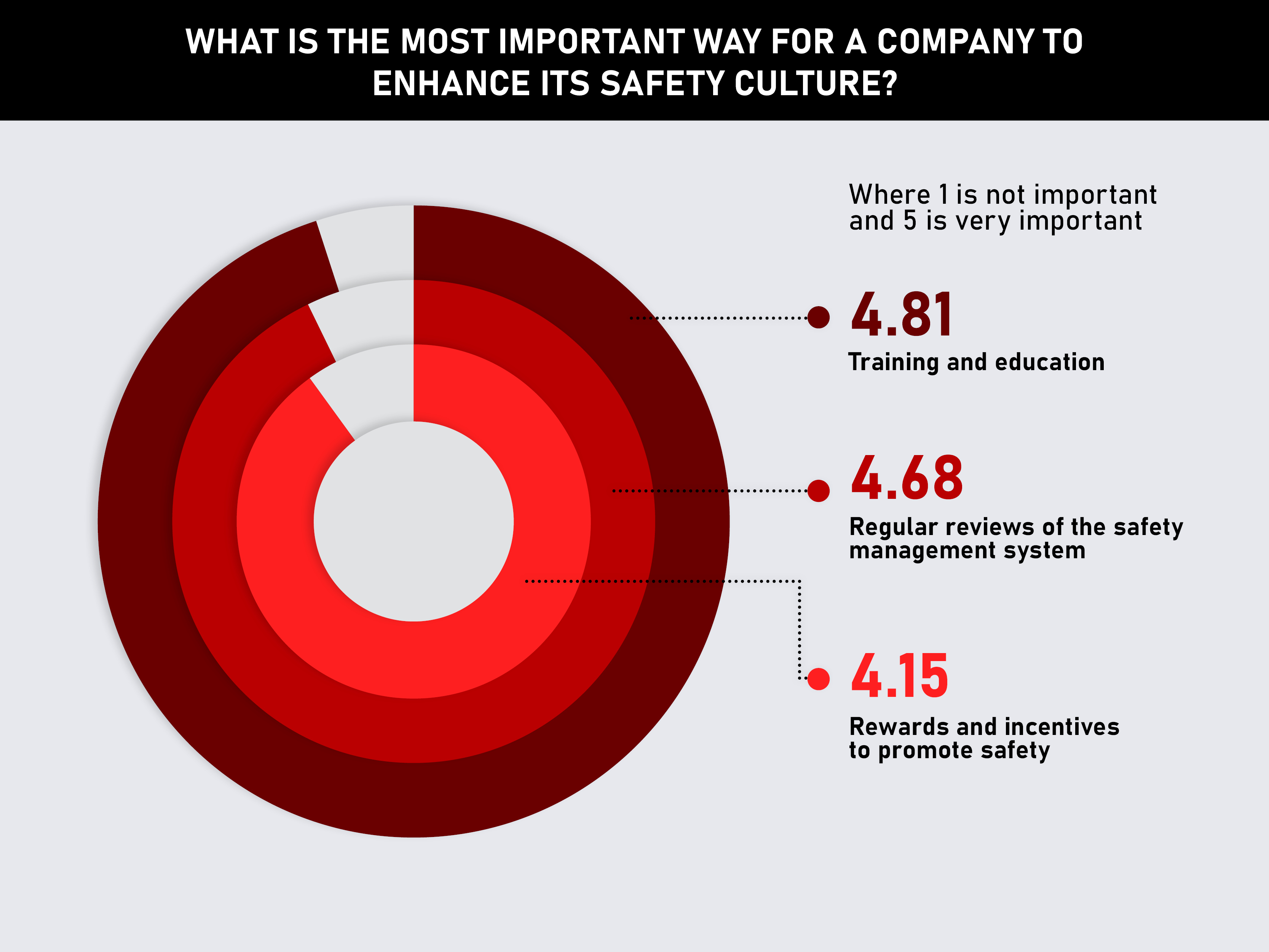

Jump to winners | Jump to methodology
A successful safety culture in the workplace embodies a multitude of factors; however, vigilance is central to them all. The 2023 COS 5-Star Safety Culture winners have been recognized for deploying a diverse set of tools and workplace policies, all in order to ensure the well-being of their employees.
Christl Aggus, the president and chairperson of the board at the Canadian Society of Safety Engineering (CSSE), emphasizes the humanist perspective.
“A normal or healthy culture would allow lateral movements and empower workers’ autonomy over situations within their control,” she explains. “There are rich traditions and celebrations, respect and tolerance, but most importantly, a feeling of belonging and contributing to something greater. There are no profits without workers, and there are no workers without profits.”
“I am a firm believer in continuous improvement; therefore, the key for me is less policy and more procedure. Policies are only effective if they are applied, measured and enforced”
Christl Aggus, Canadian Society of Safety Engineering
For Rob Stewart, the president and chief science officer of supply chain performance assurance platform Intactix Systems, the aim is to create organizations that are proactive.
“[High-reliability organizations] create an environment where problems are detected early and virtually always responded to before a serious incident occurs,” he explains. “And, in that case, this whole safety thing is very, very simple.”
Sarah Wilson, president of 5-Star winner Canadian Safety Group (CSG), has a CV that marries challenging field work experience with impressive accolades. She was an underwater welder and demolitions expert and has a master’s degree in clinical psychology and a PhD in epidemiology with a focus on predictive analytics and safety. Her background is why she believes the ideal approach to safety culture in the workplace is a mixture of pragmatism and guidance.
“Communication, mentorship and leadership are the top things we do to foster a safety culture,” says Wilson.
CSG trains organizations in sectors such as manufacturing, healthcare and mining how to operate efficiently while managing risk. In addition to consultations, gap analyses, safe work procedures and core ISO programming, CSG also excels in rescue planning for towers, cranes, high angles and confined spaces.
“We also have the only construction-based first aid program, which everyone loves,” adds Wilson. “It’s not how to put a Band-Aid on; it’s what happens when somebody’s arm has been almost amputated.”
For Wilson, CSG’s safety culture starts with her. If she lives by the company values, the attitude will trickle down to senior management and instructors, and it has.
Fellow 5-Star winner GDI Integrated Facility Services, a complete facility cleaning and maintenance company, echoes that.
“[Safety] does absolutely come from the top,” says Rennie Kissoonsingh, the vice president of operations and safety. “We have a CEO who lives and breathes safety. But our bread and butter is labour, and our culture is that frontline responsibility, getting everyone accountable for the things they’re doing and making sure they’re knowledgeable with the training and doing risk assessments and all of that to keep things going forward.”
GCI is focused on empowering its labour force to be “SAFE” – Safety is Always First for Everyone.
“Communication, mentorship and leadership are the top things we do to foster a safety culture”
Sarah Wilson, Canadian Safety Group
Meanwhile, fellow 5-Star winner BASF Canada, a plasticizer producer, is driving ahead with a data-led approach.
“Our goal for 2025 is to have lost-time injuries below 0.1 for the company, which is a very high standard with heavy manufacturing,” says Dale Witty, EHS specialist. “The next most important thing is infrastructure. And then there’s supporting and investing in people, whether it’s training or leadership training.
“Other places I’ve worked, we’ve had frontline supervisors who never get any actual training; they’re just good at their job. So, they move on up, and then they’re thrown to the wolves.”
Another 5-Star award winner, the Technical Standards and Safety Authority is “in the midst of an organizational transformation to become a more modern outcome-based regulator that relies on data to understand risk and drive decision-making,” says president and CEO Bonnie Rose. “Enhancing our internal safety culture and encouraging a collaborative mindset throughout the organization have been instrumental in driving our transformation forward. Being recognized for the second consecutive year as a 5-Star Safety Cultures Award winner validates the efforts we are making to foster a culture of leadership, accountability and teamwork.”
Illustrating how vigilant the 5-Star winners are, the COS survey data showed that 88% of employees had undergone a safety culture workplace session in the past six months or less.

“Our bread and butter is labour, and our culture is that frontline responsibility, getting everyone accountable for the things they’re doing and making sure they’re knowledgeable with the training and doing risk assessments and all of that to keep things going forward”
Rennie Kissoonsingh, GDI Integrated Facility Services
As part of the 2023 COS 5-Star Safety Cultures survey, the respondents were asked what the most important way is for a company to enhance its safety workplace culture. The results are displayed below.

Kissoonsingh adopts a logical point of view but ultimately agrees with the results.
“You start with your safety management system, then you go into training and communication,” he says. “Then you reward and incentivize some of the outcomes of that. However, from an importance point of view, training and education are very critical.”
Wilson also agrees with the hierarchy.
“I’d start with training and education, then review your SMS, then recognition and rewards,” she says. “The hazards are always evolving. We always have different types of clientele coming in, we’re always going out into different types of environments, and we always have to be up on the newest technology.”
And Witty highlights how delivering information does not equate to making the culture of a workplace safer.
“It’s easy to train. It’s more difficult to truly transfer the knowledge. We sometimes fall into the trap of thinking we’re checking our training boxes, but people don’t necessarily have the right level of knowledge on the floor. So, it’s a constant battle.”
While the 5-Star winners have distinguished themselves, their excellence shines through as they continue to focus on challenging areas to further improve their performance.
For Wilson, that problem is burnout.
“We’ve gone from just kind of coasting to the floodgates being open, and demand for everything is huge,” he says.
Wilson has introduced education on the signs and symptoms of burnout and implemented a mandatory week off to help workers recharge.
Underlining how pertinent an issue it is, for Stewart, psychological safety is an area he feels is important to monitor.
“Psychological safety is important because it impacts reporting,” he says. “And of course, if we don’t get the bad news that people aren’t reporting, I can’t do anything about it from an organization, and it certainly impacts the quality of our investigations because their investigators won’t look for the real, true root causes.”
Another challenge is corporate mergers or firms buying other entities.
“When you acquire a company, or when you acquire another contract, you acquire those employees as well,” says Kissoonsingh. “Those employees are not aligned with your current safety culture. They’ve got a different mechanism. They could be tainted; they’ve got these habits. I think that is the biggest challenge for us.”
GDI is COR-certified for Alberta, Nova Scotia and British Columbia and has a grade A or equivalent rating for multiple contractor accreditation networks, such as ISN, ComplyWorks, Avetta and ContractorCheck.
“It’s easy to train. It’s more difficult to truly transfer the knowledge”
Dale Witty, BASF Canada
A universal industry challenge for safety culture in the workplace is continuously keeping up with changing regulations.
Providing a real-word example, Witty explains, “About a year and a half ago, BASF corporate-wide, globally, set a standard of four feet for fall protection. Our contractors come in. They come in, and they’re used to working in the construction industry, and 10 feet is their criteria (six feet in industrial). So, there’s some range, but then we’re telling them they have to have a self-retracting lifeline at four feet.”
What’s more, four of BASF’s Canadian factories are fully implemented with peer-to-peer observations (ie behaviour-based safety) to identify and remove barriers to safety, which has been highly successful and engages participation at all levels. A fifth site is currently launching the program.
BASF has also set its sights beyond Canada, proving truly why it is a 5-Star winner. It has an extremely ambitious set of workplace safety culture metrics it wants to hit.
“We have a global target for BASF to reduce the worldwide lost-time injury rate per 200,000 working hours to below 0.1 by 2025,” says Witty. “This is a very high bar, and for context, the 2020 Bureau of Labour Statistics gives a lost-time injury rate for the US (for general manufacturing) as 1.8. To meet this target, BASF Canada (with approximately 1,200 employees) cannot have a single lost-time injury. Our BASF Canada lost-time injury rate in 2022 was 0.15. So, although this is a very good accomplishment, we are being pushed to do better.”
And paramount for the CSSE’s Aggus is that all industry players display an ongoing commitment to delivering meaningful results.
“I am a firm believer in continuous improvement; therefore, the key for me is less policy and more procedure. Policies are only effective if they are applied, measured and enforced,” she adds. “Policy and procedures that adequately train and empower workers provide 360-degree benefits.”
The COS 5-Star Safety Cultures entry process consisted of two steps: an employer submission followed by an employee survey. For the submission, organizations had to complete an in-depth form asking for details of the safety program initiated over the last year. Companies that successfully completed the submission phase were then sent a link to an online employee survey to be circulated internally.
Organizations had to meet a minimum number of responses to be eligible for the 5-Star Safety Cultures award, based on company size. The survey asked employees to rate their company across a range of metrics that constitute drivers of employee satisfaction. Companies that achieved an overall satisfaction rating of at least 75% were recognized as 5-star awardees.